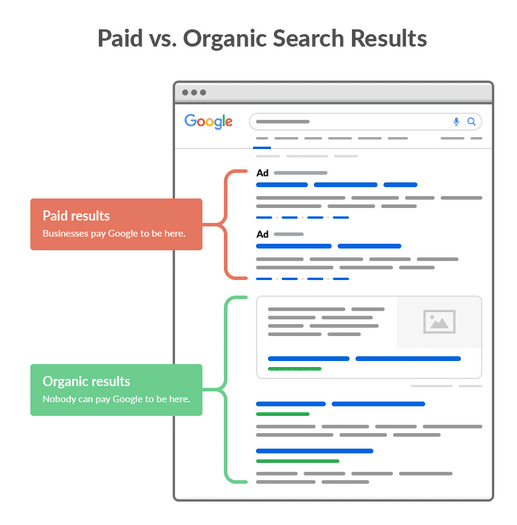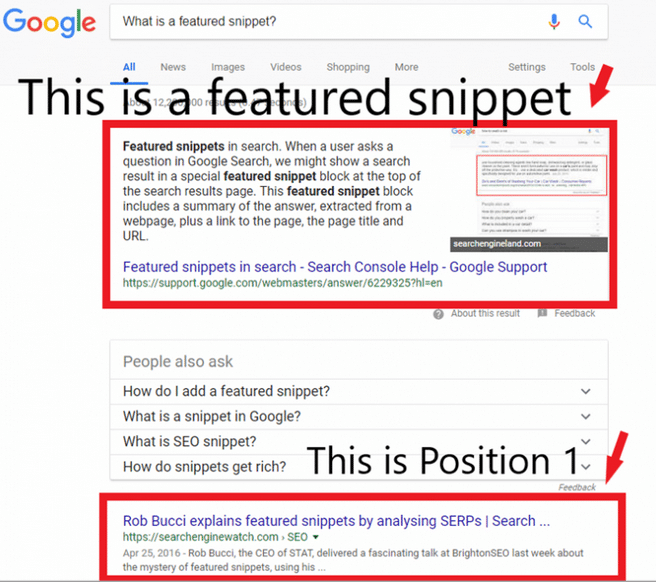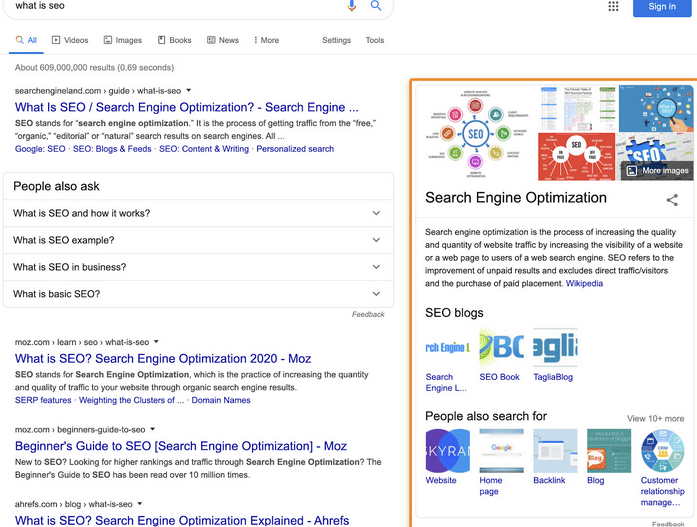In the competitive landscape of lawn mower and tractor dealership marketing, the race to the top of search engine rankings isn’t just a sprint—it’s a marathon that defines online success. Understanding the pivotal role of search engine rankings is like having the keys to the kingdom, opening doors to increased visibility and customer engagement.
Today, we’re revving up the engine to explore the intricate world of search engine rankings and decode the ever-elusive Search Engine Results Page (SERP). Why? Because mastering these elements is not just about staying in the game; it’s about dominating it.
So, buckle up for a ride through the digital terrain as we provide you with a brief overview of why search engine rankings are the fuel for your dealership’s online journey. We’ll unravel the secrets behind the SERP and offer you a roadmap—a guide that will equip your dealership with the strategies needed to claim the pole position in online searches. Ready to accelerate your digital game? Let’s hit the road and make your dealership the front-runner in the online race for success!
Understanding the Search Engine Results Page (SERP)
Ever wondered about the orchestrated dance happening behind every search query? The Search Engine Results Page (SERP) is the grand stage where the ballet unfolds, and your dealership’s performance takes center stage.
Breakdown of the SERP Components
- Organic Results:
- The heartbeat of your dealership’s online presence.
- Unpaid, organic listings that reflect the website’s relevance to search queries.
- Paid Advertisements:
- The spotlight on the SERP stage.
- Sponsored content for instant visibility, where advertisers pay for prime positions.
- Featured Snippets:
- The spotlight within the spotlight.
- Concise, informative answers showcased prominently for user convenience.
- Knowledge Graphs:
- The encyclopedia entry for your dealership.
- Rich information panels providing a snapshot of your business.
In this intricate ballet, each element plays a crucial role in defining your dealership’s online presence. Organic results showcase your website’s credibility, paid ads provide immediate visibility, featured snippets offer quick insights, and knowledge graphs act as an information hub. Understanding their significance is the key to orchestrating a stellar online performance.
Impact of Local Search Results for Lawn Mower and Tractor Dealerships
Picture this: A user in your local area searching for top-notch lawn mowers or tractors. Local search results are your dealership’s spotlight moment. We’ll explore how localized visibility can put your business on the map, connecting with nearby customers actively seeking your products and services.
Buckle up as we dissect the SERP symphony, unraveling the role each element plays, and discover how your dealership can steal the show in the digital spotlight.
The Essence of Rankings: What They Are and What They Mean
In the world of digital marketing for lawn mower and tractor dealerships, search engine rankings are the heartbeat of online success. Let’s dive into the core of what rankings truly mean and why they are the lifeline of your dealership’s digital presence.
Definition of Search Engine Rankings
At its essence, search engine rankings determine where your dealership’s website appears in search results. It’s the numerical order assigned by search engines based on various factors, defining your position in the digital landscape.
The Correlation Between Rankings and Online Visibility
Think of rankings as your dealership’s position on the main stage. The higher you rank, the more visible you become. We’ll explore how this visibility correlates directly with the likelihood of potential customers discovering and engaging with your dealership.
Significance of High Rankings in Driving Organic Traffic
Rankings aren’t just numbers; they translate into real-world impact. High rankings propel your website to the forefront, attracting organic traffic—visitors genuinely interested in your lawn mowers and tractors. We’ll unravel the strategies to elevate your rankings and boost organic traffic.
Understanding the Role of User Trust and Credibility in Higher Rankings
Trust is the currency of the digital realm. Higher rankings signal to users that your dealership is a credible source. We’ll delve into the symbiotic relationship between rankings, user trust, and how establishing credibility can propel your dealership to the top positions.
In this section, we’ll dissect the very essence of search engine rankings, demystifying their significance in driving online success for your lawn mower and tractor dealership. Ready to elevate your digital presence? Let’s unravel the layers of rankings and set your dealership on the path to digital triumph.
Tips to Help Your Lawn Mower and Tractor Dealership Rank Higher
Your dealership’s ascent to the top of search engine rankings requires a strategic roadmap. Let’s explore actionable tips to rev up your digital presence and secure a prime position in online searches for lawn mowers and tractors.
Optimizing Website Content:
- Keyword Research for Industry-Specific Terms:
- Navigate the digital terrain by identifying and incorporating industry-specific keywords.
- Uncover the phrases customers use when searching for lawn mowers and tractors. Keywords with local intent are important.
- Harness the power of tools like Google Keyword Planner for comprehensive keyword insights.
- Creating High-Quality, Relevant Content:
- Fuel your website with content that speaks to your audience’s needs.
- Craft engaging product descriptions, informative blog posts, and captivating landing pages.
- Prioritize quality over quantity, ensuring each piece of content adds value to your customers.
- Implementing On-Page SEO Best Practices:
- Fine-tune your on-page elements to align with search engine algorithms.
- Optimize meta titles, meta descriptions, and header tags for keyword relevance.
- Ensure a seamless user experience with fast loading times and mobile responsiveness.
These content optimization strategies form the cornerstone of your dealership’s journey to higher rankings. By understanding and implementing these tips, you pave the way for search engines to recognize your website as a go-to resource for lawn mowers and tractors.
Local SEO Strategies:
- Claiming and Optimizing Google Business Profile Listing:
- Secure your spot on the digital map by claiming and optimizing your Google Business Profile (GPB) listing.
- Provide accurate business information, including address, phone number, and business hours.
- Enhance your GMB profile with high-quality images showcasing your lawn mowers and tractors.
- Encouraging Customer Reviews and Testimonials:
- Cultivate a positive online reputation by encouraging satisfied customers to leave reviews.
- Respond promptly to customer reviews, showing engagement and dedication to customer satisfaction.
- Leverage positive reviews and testimonials on your website to build trust with potential customers.
- Geo-Targeted Keywords for Local Relevance:
- Infuse your website content with geo-targeted keywords relevant to your local audience.
- Optimize product pages, blog posts, and meta tags with location-specific terms.
- Connect with the community by participating in local events and highlighting your dealership’s local presence.
Mobile Optimization:
- Responsive Design for Various Devices:
- Ensure your dealership’s website adapts seamlessly to various devices, from smartphones to tablets.
- Implement a responsive design that provides an optimal viewing experience across different screen sizes.
- Prioritize touch-friendly navigation for mobile users.
- Fast Loading Times for Mobile Users:
- Capture and retain mobile users by optimizing your website for swift loading times.
- Compress images, utilize browser caching, and minimize server response times.
- Check your website’s performance using tools like Google PageSpeed Insights.
- Mobile-Friendly Content Presentation:
- Tailor content for mobile users with concise and easily digestible information.
- Prioritize essential details on product pages and simplify navigation menus.
- Implement clear calls-to-action to guide mobile users seamlessly through the customer journey.
Link Building Tactics:
- Acquiring High-Quality Backlinks from Relevant Sources:
- Build your website’s authority by acquiring backlinks from reputable and industry-related websites.
- Foster relationships with influencers and collaborators who can vouch for your dealership.
- Guest posting on relevant blogs is an effective way to secure quality backlinks.
- Internal Linking for a Seamless User Experience:
- Enhance user navigation and encourage exploration by implementing strategic internal linking.
- Connect relevant pages within your website to guide users to additional valuable content.
- Establish a logical and user-friendly link structure for search engine crawlers.
- Monitoring and Disavowing Toxic Backlinks:
- Conduct regular audits of your backlink profile to identify potentially harmful links.
- Utilize tools like Google Search Console to monitor and analyze your backlinks.
- Disavow toxic backlinks to safeguard your website’s credibility and maintain a healthy link profile.
Social Media Integration:
- Leveraging Social Media Platforms for Brand Promotion:
- Amplify your dealership’s online presence by strategically utilizing social media platforms.
- Showcase your lawn mowers and tractors through visually appealing posts and engaging content.
- Connect with your audience on platforms like Facebook, Instagram, and Twitter to reinforce brand awareness.
- Encouraging Social Sharing of Website Content:
- Integrate social sharing buttons on your website to facilitate content sharing.
- Encourage customers to share their favorite products or informative blog posts on their social media channels.
- Leverage user-generated content for organic promotion through social sharing.
- Utilizing Social Signals for SEO Benefits:
- Harness the power of social signals by fostering active engagement on social media.
- Respond promptly to comments, messages, and mentions to demonstrate responsiveness.
- Search engines take social signals into account when assessing your website’s credibility and relevance.
These comprehensive strategies form the cornerstone of elevating your lawn mower and tractor dealership’s online presence. By implementing these tips, you’ll not only enhance your search engine rankings but also establish a robust digital footprint that resonates with your target audience. Stay tuned for more insights as we continue our journey towards digital success!
Implementation is key
As you implement these insights and strategies, may your dealership’s digital engine roar to life, navigating the digital landscape with finesse and securing its place among the top contenders. Here’s to revving up your search engine rankings and steering towards sustained online success!






